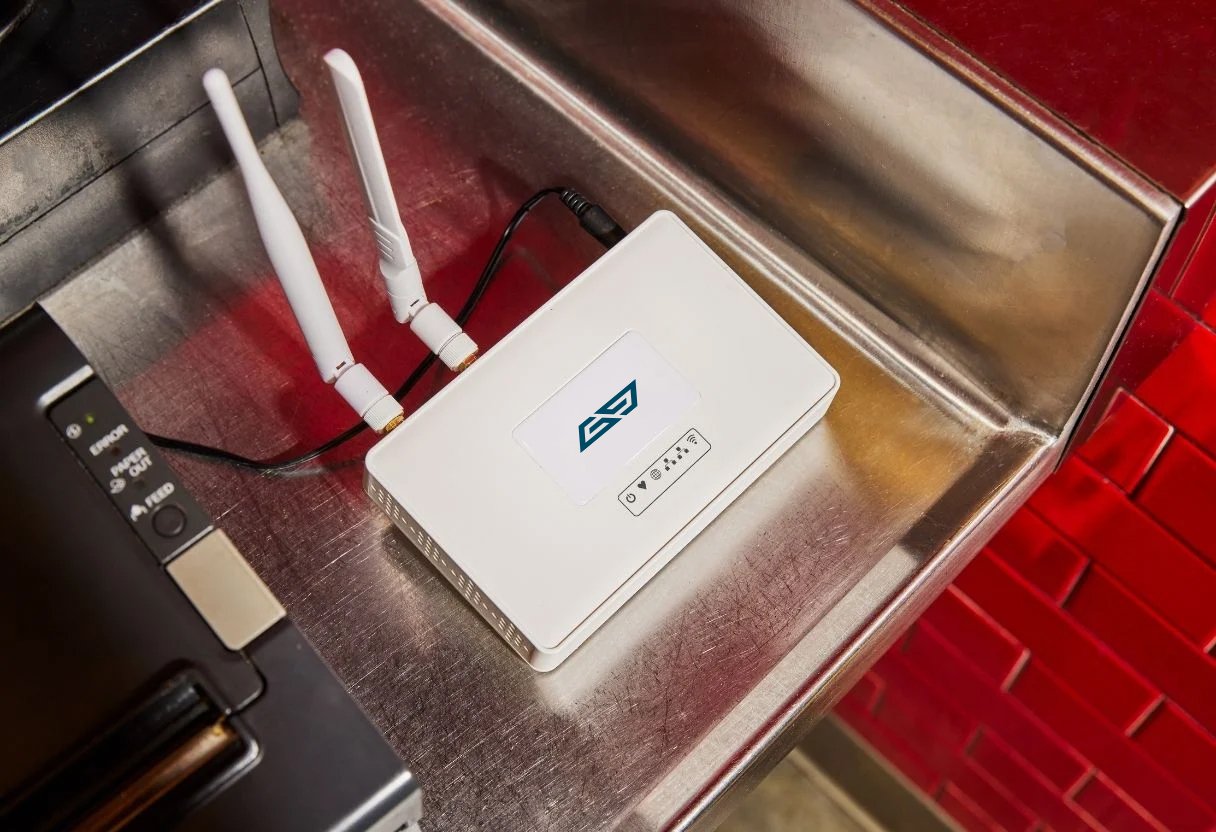3 Ways Remote Temperature Monitoring Devices Maximize Your ROI

Remote temperature monitoring devices automate the processes associated with manual temperature monitoring. Still, managers and operators in the food service industry face a variety of unknowns when considering remote temperature monitoring devices for their business.
The most common unknowns include:
- What are the benefits of remote temperature monitoring devices?
- How much do they cost?
- Will I see a return on investment?
While these concerns would make you think twice about getting remote temperature monitoring devices, let’s first dive into why you should consider them as must-haves for your restaurant business.
Using remote temperature monitoring devices vs. traditional thermometers
Time and again, temperature monitoring has proven to be one of the most effective methods to protect your inventory and put money in your pocket. Most businesses in the food service industry already utilize temperature monitoring protocols as part of their daily operations.
Usually, food service teams accomplish this task manually through the use of thermometers. And yes, while thermometers are inexpensive and easy to use, they’re also inaccurate and require additional time and labor to track accrued data.
| Benefit | Remote Temperature Monitoring Devices | Traditional Thermometers |
| 1. Remote Access |
|
|
| 2. Continuous Monitoring |
|
|
| 3. Multi-location Monitoring |
|
|
| 4. Real-time Alerts |
|
|
| 5. Preventive Maintenance |
|
|
| 6. Data Logging |
|
|
| 7. Efficiency |
|
|
Aside from the accuracy, precision, and reliability of remote temperature monitoring devices, rest assured that they also play a part in maximizing your ROI in more ways than one.
Here’s how remote temperature monitoring devices can improve your ROI
-
Sensors are properly calibrated
Temperature drift caused by improper calibration can skew data, which makes it challenging to draw actionable insights into the state of your cold storage. In fact, manual temperature calibration is more prone to calibration issues.
With proper sensor calibration, such issues are avoidable. Using remote temperature monitoring ensures you receive correct data every time.
What does a reliable temperature monitoring system look like? For starters, GlacierGrid’s remote temperature monitoring system is proven to be accurate within +/- 0.5°F.
- Labor time can be drastically reduced
While temperature audits may take only a few minutes to complete, regulations require that teams complete them multiple times per day. Before using GlacierGrid, Justin Hope of the Geneva County School District estimated that his cafeteria staff spent about an hour everyday checking temperatures manually.
Foodservice teams face the rigors of busy service periods and may not put the effort towards properly conducting checks, leading to “pencil whipped” or forged logs.
In contrast, remote temperature monitoring devices require no side work for your team. Once installed, sensors constantly measure the temperature of your cold storage equipment.
When temperatures exceed the food safety threshold, you’re immediately alerted and can make timely decisions to protect your inventory and equipment.
-
Temperature monitoring devices are an investment in cost-efficiency
Temperature monitoring devices vary significantly in cost. However, thanks to recent advances in technology, there are many options to fit your specific needs.
For large enterprises, many manufacturers sell temperature monitoring devices in bulk. Buying in bulk often leads to discounts on each device, making them a good fit for multi-location businesses. However, purchasing hardware requires high upfront costs, rendering them inaccessible to small franchises or family-owned restaurants.
Other temperature monitoring platforms, like GlacierGrid, rely on a per-sensor, monthly pricing model. GlacierGrid costs $12.50 per sensor per month with no contracts, creating limited risk for those who want to participate in a pilot program.
If you find yourself unsatisfied with GlacierGrid, you can easily cancel your subscription with no penalties or hidden fees.
So, will remote temperature monitoring devices maximize your return on investment?
In conclusion, your ROI still depends on key factors such as the size of your business, the value of your inventory, and the amount of cold storage you own.
However, before you track ROI, consider how much of your perishable inventory you’ve experienced going to waste. The average restaurant spends about 35% of its budget on inventory. On an annual basis, restaurants waste up to 10% of that inventory.
With GlacierGrid, foodservice businesses can expect to save $15,000 per year, accounting for an additional 1.3% profit annually.
Some of GlacierGrid’s customers experienced even better results:
- Skyline Chili saw a 15% ROI, accounting for $18,000 after one year of using GlacierGrid.
- Eggs Up Grill saw a 25% ROI and once prevented $1000 of food waste at one time.
If you’re curious with how much money you can save, feel free to use our ROI calculator.
Want to know more about our temperature monitoring device?
At GlacierGrid we make it easy for you to protect your inventory and put money back in your pocket. With no contracts or order requirements and low upfront costs, GlacierGrid’s temperature monitoring devices are an excellent option for any size business.
Manage your cold storage efficiently and maximize your ROI with GlacierGrid!







